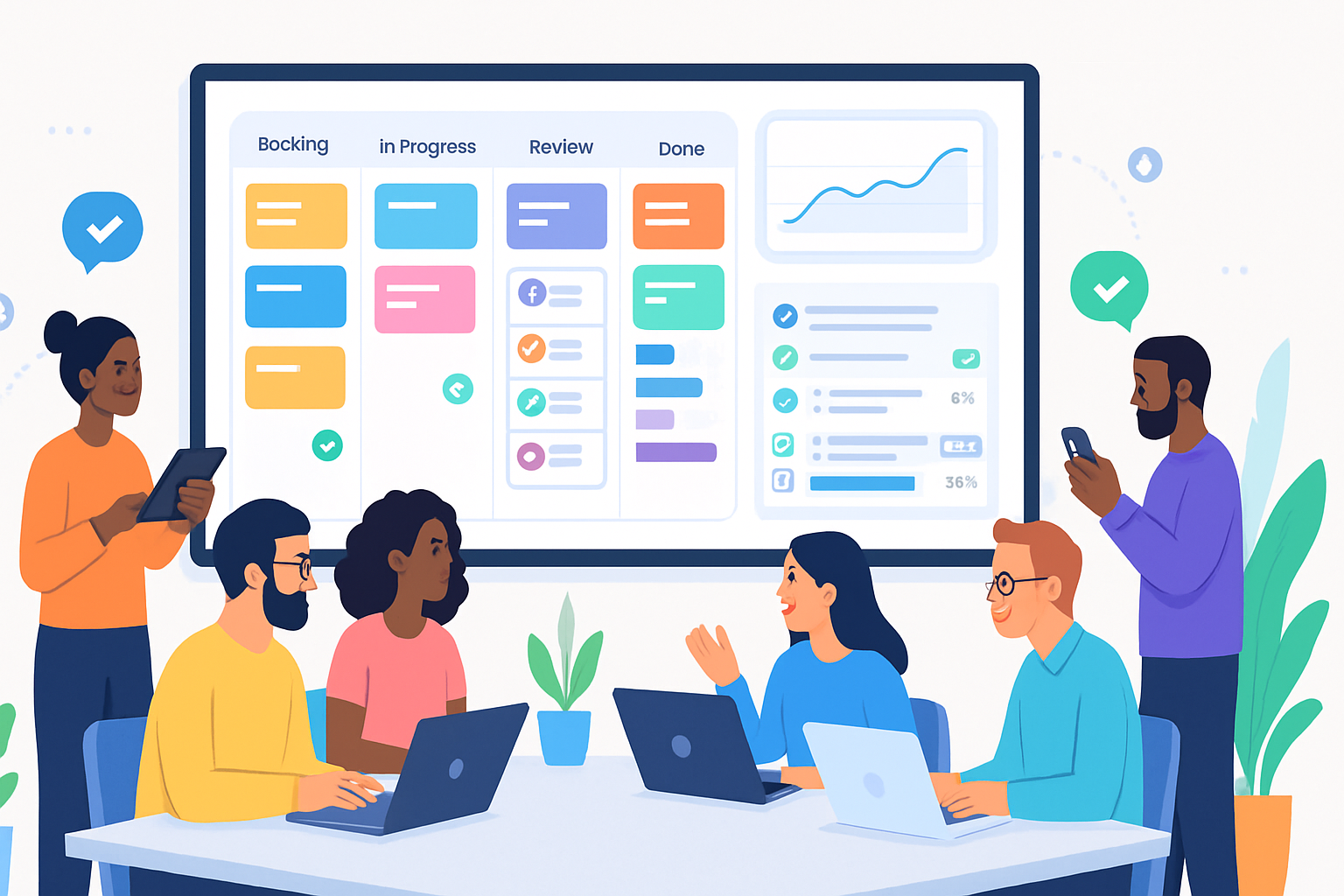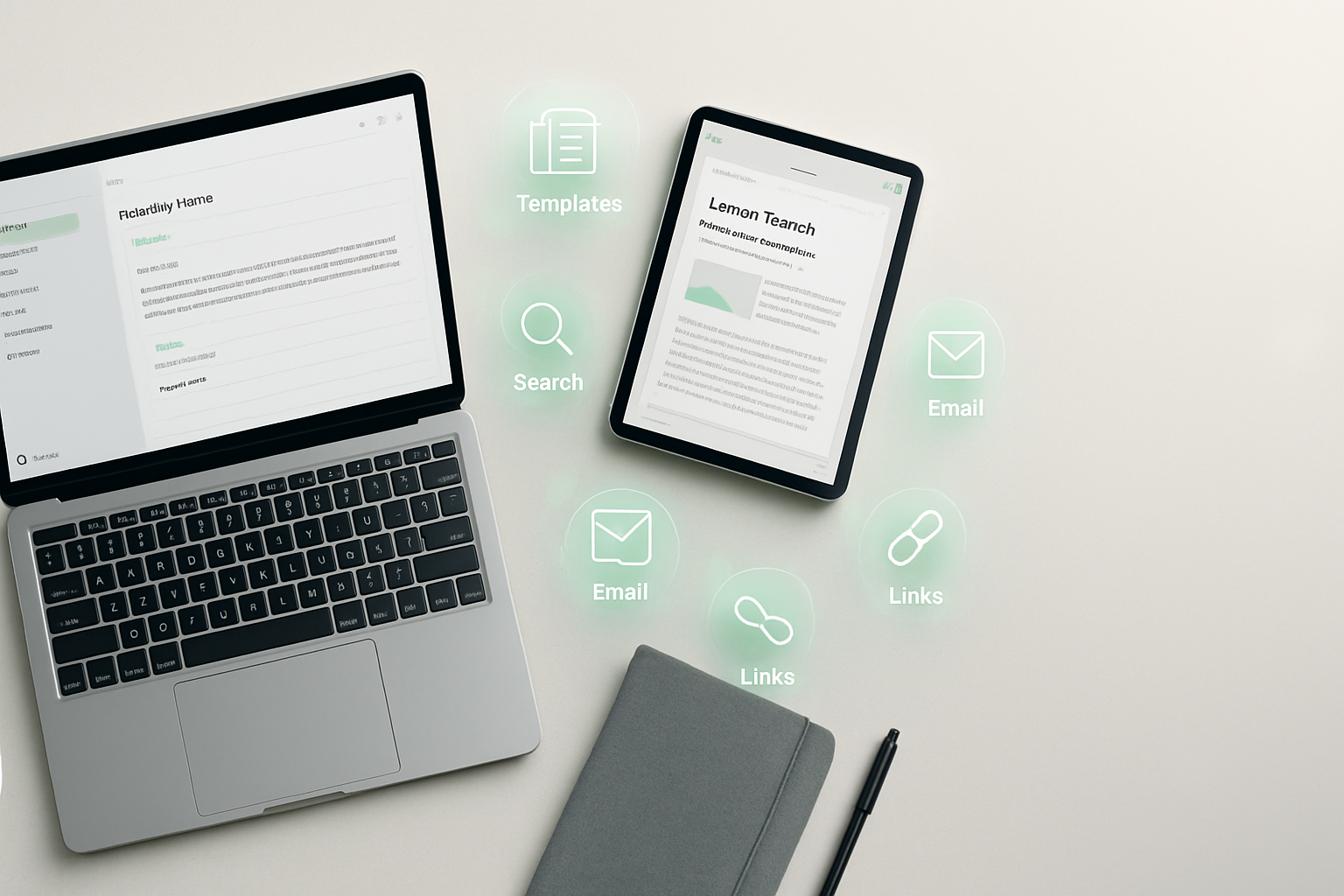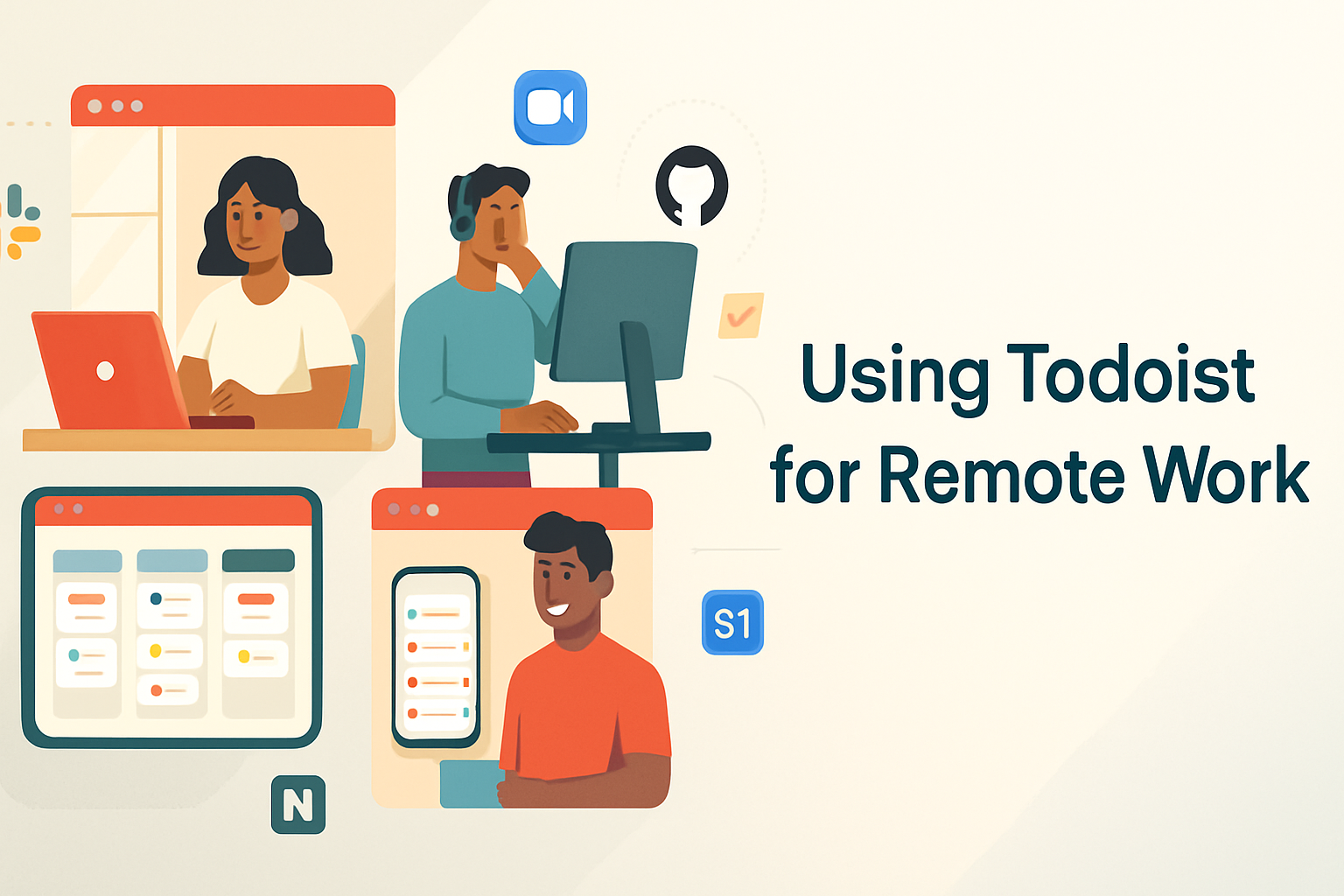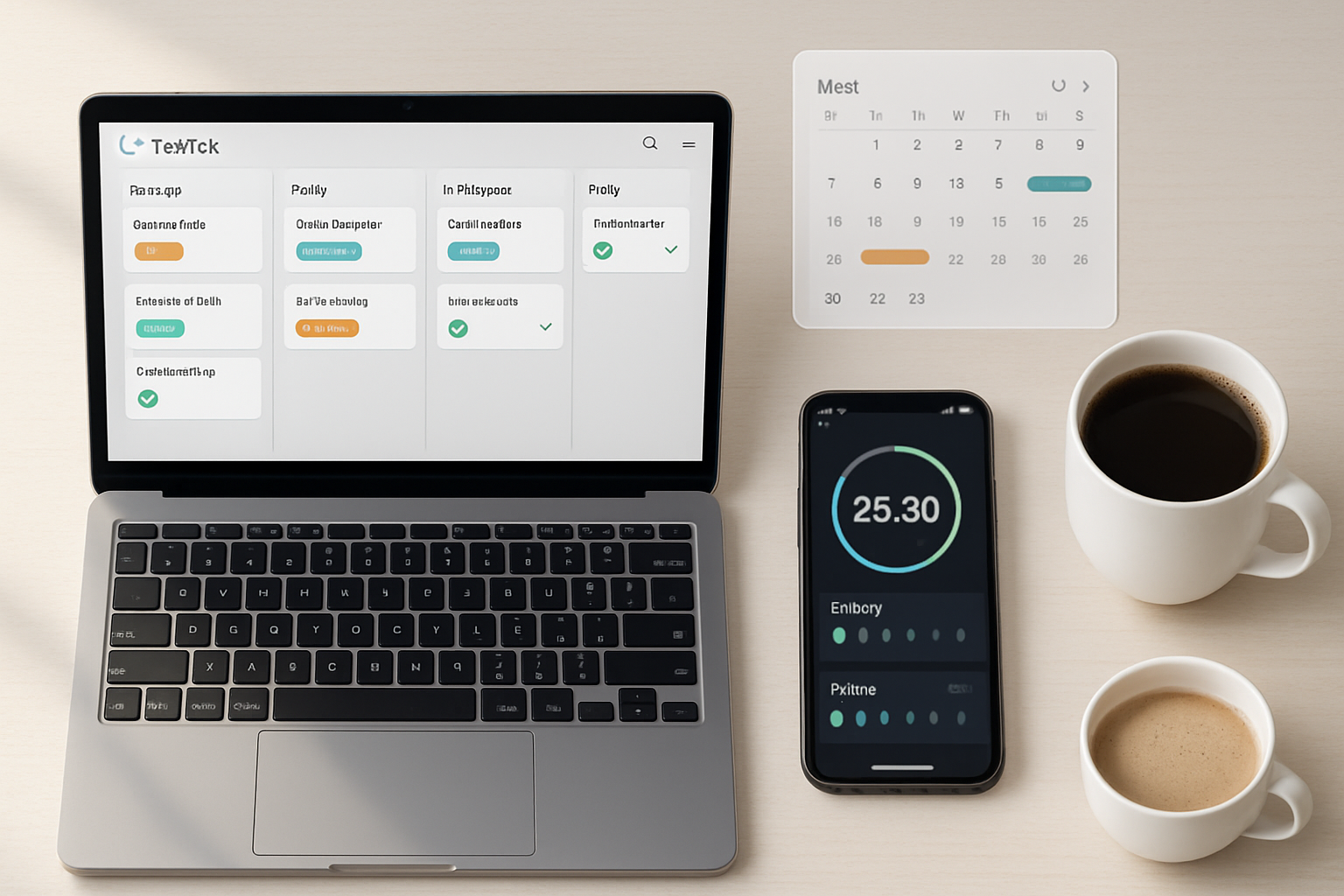· productivity · 5 min read
10 Miro Tips You Didn't Know You Needed
Discover 10 lesser-known Miro features - hidden shortcuts, auto-layout tricks, smart integrations and more - that will speed up your workflows and make your boards feel effortless.
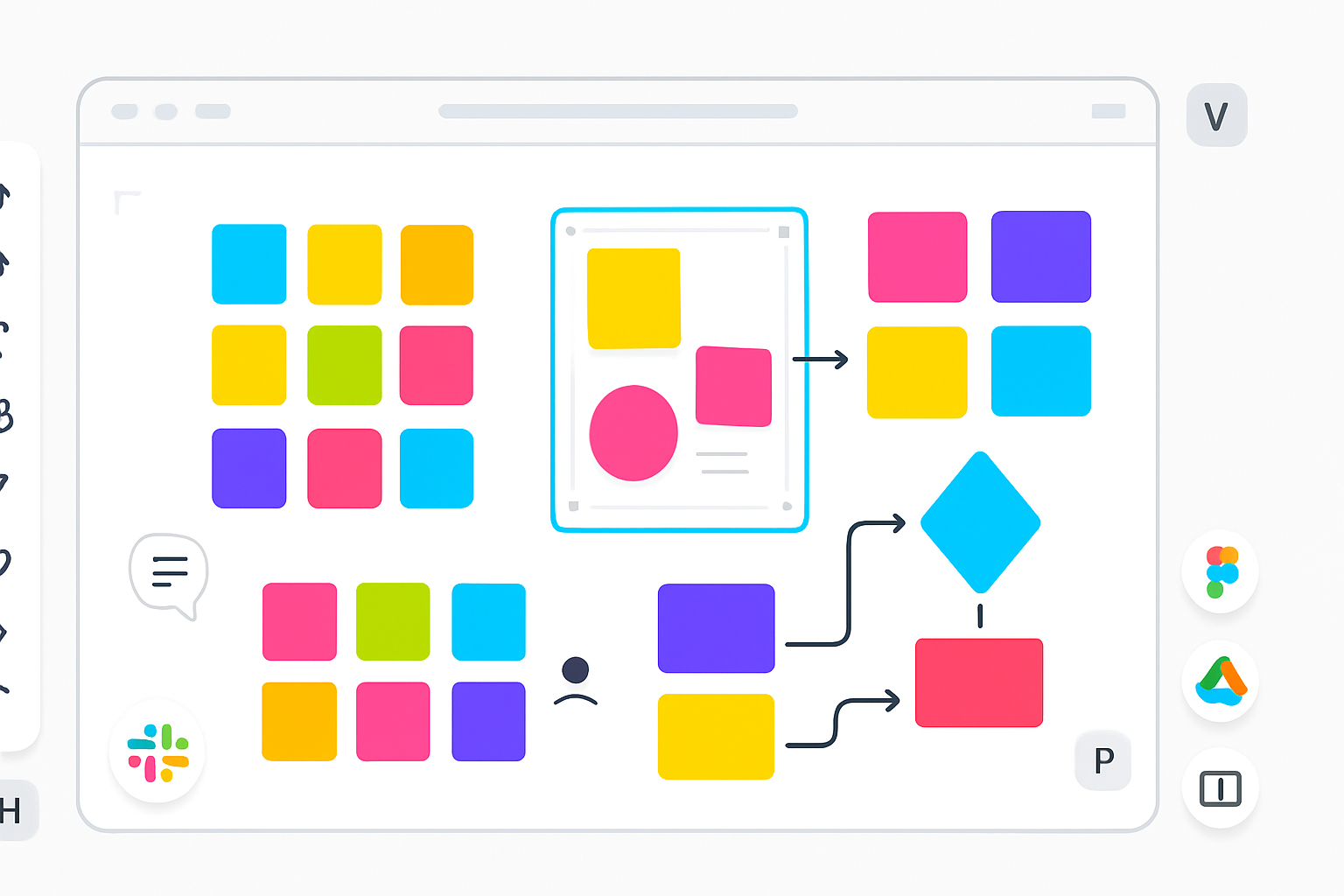
Miro is deceptively deep: beyond the sticky notes and infinite canvas are small features and smart integrations that save time, reduce friction, and make your boards far more powerful. Here are 10 practical tips you can start using today.
1) Learn the power of keyboard shortcuts (and customize them)
Shortcuts are where Miro stops feeling like a canvas and starts feeling like a tool. A few underused ones:
- Press
Hto toggle the Hand (pan) tool quickly. - Press
Vto switch to the Select tool. - Press
Sto quickly create a sticky note then type - perfect for rapid ideation. - Hold
Shiftwhile resizing to keep proportions.
Tip: open the full list inside Miro or reference the shortcuts guide to learn platform-specific keys: https://help.miro.com/hc/en-us/articles/360017575913-Keyboard-shortcuts
2) Draw messy - let Smart Drawing tidy it
Sketching freehand is fast, but imperfect shapes look messy. Miro’s Smart Drawing recognizes and converts quick sketches into clean shapes and connectors. How to use it:
- Select the Pen tool (or just press
P). - Draw a rough shape (circle, arrow, box, etc.).
- Release and wait a fraction - Miro will replace your sketch with a neat vector shape.
This keeps the momentum of sketching while making diagrams presentable without manual clean-up.
3) Auto-layout: turn chaos into structure in one click
Auto-layout organizes groups of cards, sticky notes, and shapes into readable flows. Use it when your map is getting dense.
How to apply:
- Select a cluster (drag to marquee-select or shift-click items).
- From the context toolbar choose Auto-layout (or use the right-click menu).
- Pick a direction (horizontal/vertical) and spacing.
Auto-layout is great for mind maps, flowcharts, and cleaning up imported content. Read more: https://help.miro.com/hc/en-us/articles/360017575953-Auto-layout
4) Frames are your slides, your bookmarks, and your exports
Frames are multi-purpose: they let you define areas for presentation, versioning, and export.
- Use frames as slides in Presentation Mode.
- Name frames to create a quick table of contents and share specific parts of the board.
- Export frames individually as PNG/PDF/CSV for handoffs.
Quick workflow: create a frame around content → press Present → use arrow keys to move between frames. Learn frames: https://help.miro.com/hc/en-us/articles/360017575573-Frames-presentation-and-export
5) Paste lists to create sticky notes (bulk-ideate instantly)
When you have a long list (meeting notes, brainstorm items, backlog items), copy a list of lines and paste directly onto the board - Miro will turn each line into a sticky note. This is invaluable for turning capture into structure quickly.
Example:
- Copy a bulleted list from a doc.
- Click on the board and paste (Ctrl/Cmd+V).
- Use Auto-layout or the Board’s Align tools to tidy the new stickies.
Reference: how to create stickies from text: https://help.miro.com/hc/en-us/articles/360017576773-Create-sticky-notes-from-text
6) Convert sticky notes to cards, then to Kanban
If your brainstorm needs to become a plan, convert stickies into cards and then use a Kanban board template.
Steps:
- Select sticky notes.
- Right-click → Convert to card.
- Use the Kanban template or move converted cards into a column frame.
Cards support richer fields (assignees, due dates) - perfect for handing off work without retyping.
7) Use Miro AI for summaries, idea generation and action items
Miro introduced AI helpers to speed common board tasks: summarize long boards, generate action-item lists from notes, and propose templates or prompts for workshops. Typical uses:
- Summarize a messy board into 3–5 bullets.
- Create a short agenda from a brainstorming frame.
- Generate alternative framing or prompts to re-ignite ideation.
Access depends on plan and availability; check the Miro Help Center for current instructions: https://help.miro.com/hc/en-us/articles/360020199194-Use-Miro-AI
8) Export smarter: use frame exports and design integratons
Rather than screenshotting, use frame exports or direct integrations:
- Export selected frames as PNG, PDF, or CSV (for sticky content).
- Use the Figma and Adobe integrations to hand off assets as editable design files.
- Export frames as images for documentation or slide decks.
Workflow tip: create a frame sized to 16:9 to export clean slide-ready images.
9) Marketplace apps: add only what speeds you up
The Miro Marketplace contains a host of apps that add capabilities to the board. A few worth trying:
- Jira/Asana/Trello integrations - push work from board to your tracker.
- Table app - add spreadsheet-like structures inside Miro.
- Timer and Voting apps - run better workshops.
- Diagramming / UML tools - for engineers documenting designs.
Install apps from: https://help.miro.com/hc/en-us/articles/360017572753-Integrations-and-apps
Pro tip: install and test one app at a time; an app you use weekly is worth it, otherwise it clutters the toolbar.
10) Save custom templates and build a reusable library
If your team runs recurring rituals (retros, PI planning, user story mapping), capture your best board as a template:
- Create the board or frame layout you want to reuse.
- Save it as a Template (Board settings → Save as template).
- Add it to your team library so everyone can access it.
This reduces meeting prep and ensures consistent facilitation across sessions. Templates docs: https://help.miro.com/hc/en-us/articles/360017575673-Templates-and-the-template-picker
Quick One-Page Cheatsheet
- H - Hand tool, V: Select, S: Sticky note, P: Pen
- Paste multi-line lists → instant sticky notes
- Select group → Auto-layout → tidy map
- Frame → Present / Export → Slide-ready images
- Convert stickies → Cards → Kanban
Closing thought
These are small, practical moves you can apply immediately to cut friction and keep focus on outcomes, not board housekeeping. Combine them - e.g., paste notes → auto-layout → convert to cards → export a frame - and you’ll see how quickly a messy brainstorm can become a prioritized plan.
References
- Keyboard shortcuts: https://help.miro.com/hc/en-us/articles/360017575913-Keyboard-shortcuts
- Frames & export: https://help.miro.com/hc/en-us/articles/360017575573-Frames-presentation-and-export
- Auto-layout: https://help.miro.com/hc/en-us/articles/360017575953-Auto-layout
- Create stickies from text: https://help.miro.com/hc/en-us/articles/360017576773-Create-sticky-notes-from-text
- Integrations & apps: https://help.miro.com/hc/en-us/articles/360017572753-Integrations-and-apps
- Miro AI: https://help.miro.com/hc/en-us/articles/360020199194-Use-Miro-AI
